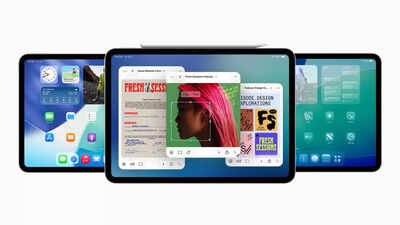ARTICLE AD BOX

Apple recently unveiled its latest iPadOS operating system version —
iPadOS 26
at the company’s annual developer conference, WWDC 2025. Now, Apple's Senior Vice President of Software Engineering,
Craig Federighi
, has shed light on why it took so long for the iPad to gain truly
Mac-like multitasking
capabilities, a feature prominently showcased in the newly announced iPadOS 26. In a recent interview given to Arstechnica, Federighi acknowledged that while the transition may seem obvious now, several technical and philosophical hurdles delayed its implementation. During the iPadOS 26 announcement at the Worldwide Developers Conference (WWDC) this week, Apple introduced a new windowing system, resizable app windows, and a macOS-style menu bar, bringing the iPad closer than ever to a
desktop computing experience
. This evolution has been a long-standing request from many professional users.
Craig Federighi explains reason behind the delay
Federighi explained that the iPad’s touch-first interface required instant responsiveness, unlike Macs, where users interact indirectly via a pointer. Early iPads lacked the memory, processing power, and dynamic app designs needed for full multitasking."You have to start with the grounding that the iPad is a direct manipulation touch-first device. It is a foundational requirement that if you touch the screen and start to move something, that it responds. Otherwise, the entire interaction model is broken—it’s a psychic break with your contract with the device," Federighi told Ars Technica.
Over the years, as iPad hardware became significantly more powerful with the introduction of Apple's
M-series chips
(starting with the M1 in 2021), and as user habits shifted towards more frequent use of keyboards and trackpads with the device, the "stars kind of aligned," Federighi stated. This convergence of improved hardware capabilities and evolving user behaviour finally made it possible to implement more complex window management without compromising the iPad's touch-first responsiveness and fluidity.Despite the changes, Federighi emphasised that iPads and Macs remain distinct devices. While iPadOS 26 brings desktop-class multitasking, Apple insists that the iPad is not just a Mac with a touchscreen—it retains its unique interaction model.



.png)
.png)
.png)
















 18 hours ago
4
18 hours ago
4









 English (US) ·
English (US) ·